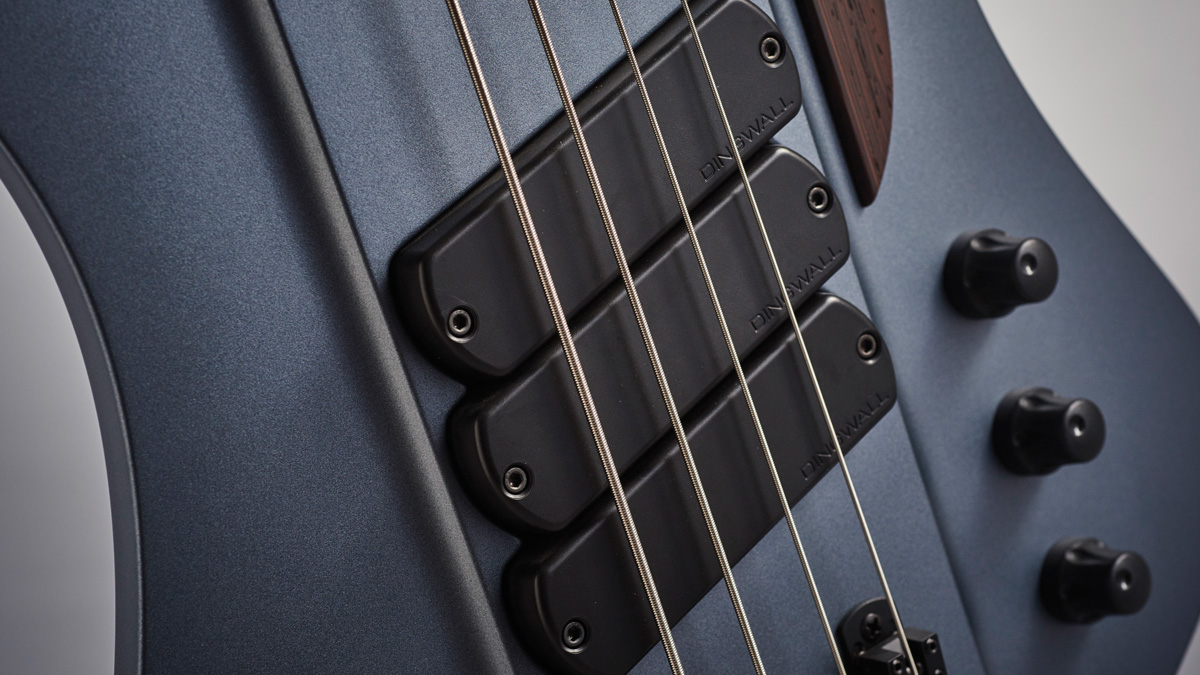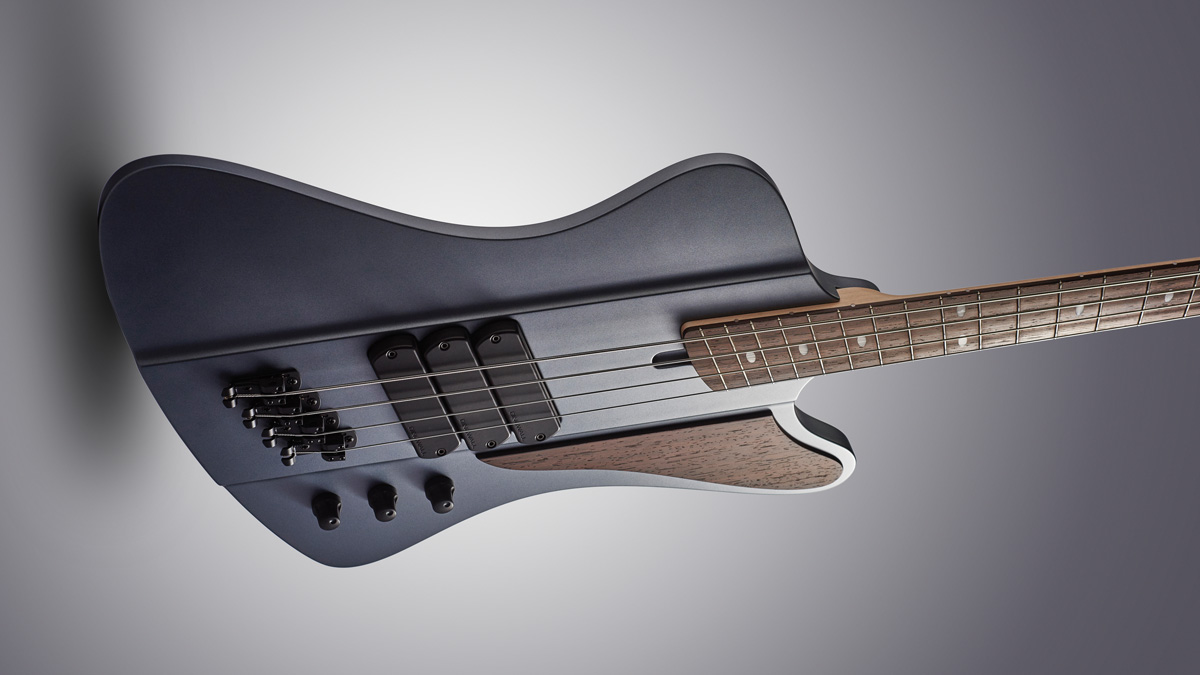MusicRadar Verdict
A fine reinterpretation by Dingwall and an excellent bass in its own right.
Pros
- +
Great tones and playability.
Cons
- -
Pricey.
MusicRadar's got your back
We first saw this amazing-looking bass at the London Bass Guitar Show in 2016.
The other LBGS visitors were slavering to get their hands on it, not simply because it’s a Dingwall, but because the original Gibson Thunderbird body shape on which it is based holds such nostalgic value for many players despite its infamous balance issues. With this new model, Sheldon Dingwall and his team have taken an iconic design, woven their magic and come up with a contemporary bass that doffs its cap in recognition and then moves the classic design forward.
The price is high, though - so what are you getting for your hard-earned cash?
Build
When it comes to looks, the D-Bird has it all, with the steel-grey satin body finish perfectly offset by the organic-looking wenge scratchplate. Curvaceous is a fair description of the body shape while its thin depth, rear wing contouring and overall dimensions make it a comfortable bass to wear - not necessarily something you could say about the original Gibson!
The central body section is raised above the upper and lower wings; this has led to much of the body timber being removed, which in turn helps the instrument’s weight and balance no end.
The four-bolt neck pocket is tight and secure, and after playing the bass for only a few minutes, it is clear that Sheldon and his team have spent much time and consideration in getting this bass just right. The fairly-proportioned headstock features a matching wenge front facing that sits well with the richly coloured wenge fingerboard and scratchplate.
The usual high level of finishing is obvious, while the Hipshot hardware instils confidence that all is as it should be in those departments. The side mounted jack socket is ideally positioned, too.
Want all the hottest music and gear news, reviews, deals, features and more, direct to your inbox? Sign up here.
Sounds
Body shapes such as this either work or they don’t, based on the positioning of the strap buttons, located here at the point of neck and body attachment and the rear of the top body bout.
We’re happy to report that this bass balances supremely well. Its overall dimensions and scale length have been well designed, creating a highly playable bass with traditional features such as a 20-fret neck, 19mm string spacing and mid-body pickup placement. These should keep rockers of yesteryear (like us!) happy.
The D-Bird is equipped with no fewer than three FD3n neodymium pickups and a four-position pickup selector. The warm tones you would associate with a passive bass such as this are firmly in place. Using the pickup selector, you can choose to operate the bridge pickup in parallel, the bridge and middle pickups in series, the neck and bridge pickups in parallel or the neck pickup in series.
Each option has a significant tonal footprint and will respond differently, based on your playing style and string attack. From that point, using the tone control for some additional light and shade is all that should be required.

No matter which configuration you choose, the overall tone is clear and resonant, with plenty of punch - so have no fear that the bass might not cut through without an active EQ. The extra scale length helps to punctuate the performance of each string, and I was pleased to hear the organic tones conveyed with plenty of clarity.
That’s not to say the bass lacks warmth, but the notes stand out and are clearly voiced. The bass works when slung low, although it’s equally playable if you prefer to use a shorter strap - so if using a pick at knee height is your thing, go for it! For those of us without arms like gibbons, the bass performs very well at waist height.
A passive Dingwall isn’t a new invention, of course, but having seen many of the company’s active models in recent years, a passive bass from them makes for a refreshing change.
In terms of performance, features, hardware and overall sound, Dingwall have produced a winner. The Gibson Thunderbird was a ‘Marmite’ instrument - you either loved it or hated it - and the D-Bird shows what can be done when some modern design thinking is applied to the classic design.
Even if you’re not convinced by the body shape, we strongly suggest you track a D-Bird down and put it through its paces. You may just surprise yourself.
